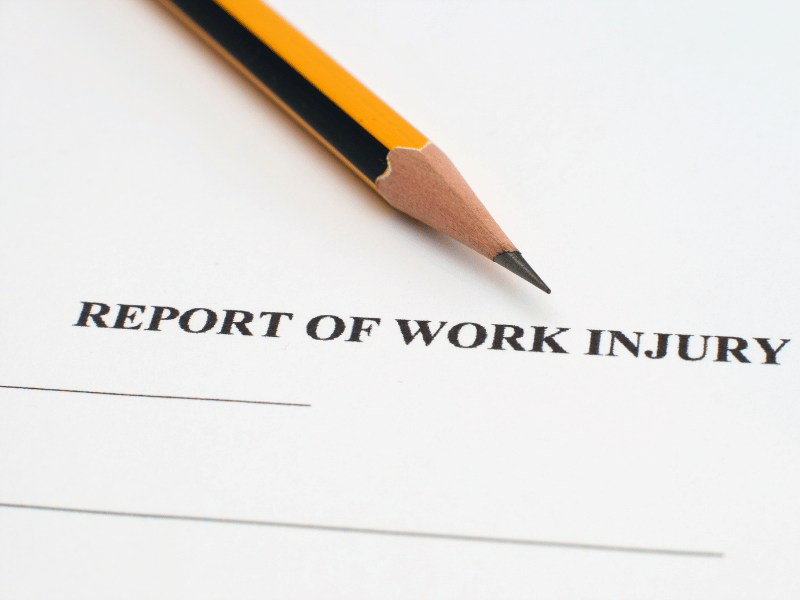Incident reports ensure preventive measures are in place. Employers can track and record work-related injuries using the OSHA Form 300a. The Occupational Safety and Health Administration (OSHA) requires employers to establish and maintain a safe and secure work environment to prevent accidents.
Below is everything you need to know about the OSHA Form 300a, including its benefits and requirements.
Table of Contents

What Is the OSHA 300A Form?
The OSHA 300A form is an annual summary of all incidents and injuries in the workplace. From February through April, employers must submit a complete report of the work-related incidents of the previous year. However, companies with only 10 or fewer employees and those in low-hazard industries such as bookkeeping, advertising, and child care are partially exempt from the requirement.
For a complete list of partially exempt industries, click here.
What needs to be included in the 300a log?
OSHA requires employers to log the total number of workplace incidents, injuries, illnesses, and missed and restricted days. Moreover, companies should also keep these records for five years and provide copies to current and former employees who request them.
Every year, around 80,000 establishments report directly to OSHA for the site-specific inspection targeting program. The Bureau of Labor Statistics (BLS) also refers to the injury and illness records as their guide for the Annual Survey of Occupational Injuries and Illnesses.
Who is authorized to post the OSHA 300a Form?
Typically, the company executive must file the annual incident log. This refers to the highest-ranking official of the firm, the immediate supervisor, the owner of the company, or the CEO/CFO. If your company is subject to OSHA’s recordkeeping regulations, make sure that your company representative files the incident log on time to avoid punitive fines.
What happens if you fail to comply with OSHA?
Failure to submit the OSHA Form 300a or adhere to the general OSHA recordkeeping requirements can result in legal consequences and reputational damage. Furthermore, noncompliant employers may risk losing their benefits with OSHA. If you don’t provide accurate records, your company may face hefty fines as it equates to your willful doing of not prioritizing your employees’ safety.
Also see: OSHA Form 300

Importance of Accurate Workplace Injury Reporting
With workplace safety in mind, OSHA Form 300a can help employers create action plans to prevent work-related incidents. The 300a log is intended to improve the monitoring and recording of workplace injuries and illnesses.
Data gathered from the incident forms helps OSHA identify workplace hazards to ensure the overall safety of employees. It also reminds employers to be responsible for ensuring that they follow safe work practices at all times.
Benefits of Proper OSHA 300a Form Documentation
By maintaining complete and up-to-date incident records on the OSHA Form 300a, employers are better equipped to ensure workplace safety. With proper OSHA 300a form documentation, employees can benefit from the following:
1. Prevent work-related injuries in the future.
When you log incidents at work, you can keep track of the hazards in the workplace. The more you know, the better you and your employees can prevent accidents. Moreover, you can evaluate your current work safety policies in place and make necessary changes.
2. Analyze work incident trends.
Besides workplace accident prevention, employers can also identify and evaluate common injuries and illnesses that take place within their premises. According to the National Safety Council, some of the frequently reported work incidents include slips and falls, exposure to harmful substances, and overexertion.
3. Administer company safety and health programs.
Risk assessments ensure that workers follow the company safety measures in place. OSHA has created a step-by-step guide for health and safety programs for employers to use in their workplaces.
4. Log work-related accident records to support injury claims.
Personal injuries at work can be subject to compensation. If you think your employer is at fault, you can make a successful claim when you present accurate and detailed accident logs. These records show that there are certain hazards in the workplace your employer must’ve addressed before the accident occurred.
5. Detect problem areas.
Lastly, reviewing the company’s OSHA 300 injury and illness logs can help you identify potential problems that may have gone unnoticed. Observations of workplace conditions also serve as a guide in creating proactive methods to solve existing safety issues before they get worse.
Ensuring Compliance With OSHA Regulations
OSHA Form 300a and other relevant compliance forms are crucial to demonstrating your commitment to ensuring workplace safety. The more you adhere to the standards set forth by OSHA, the less likely your organization will encounter noncompliance fines and penalties.
More importantly, you can proactively address potential hazards that jeopardize your valued workers’ well-being, physical safety, and overall health.








